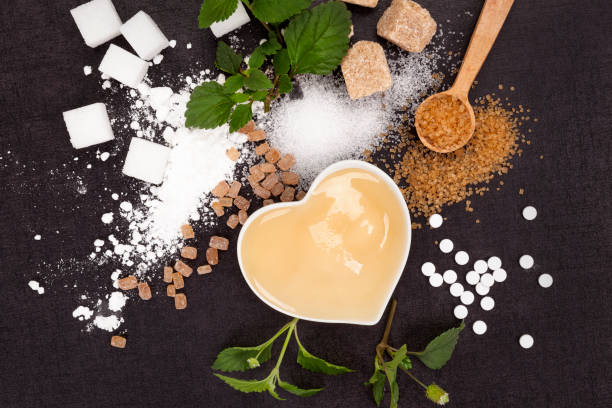Sugar-free, reduced-sugar, no sugar – what does this information on food packaging actually mean? If you want to eat healthily and reduce sugar, you should know what is in which food. PraxisVITA explains what the designations on the products mean exactly.
No added sugar, low-sugar, sugar-free – what does that mean?
Sugar-free nutrition is trendy – more and more people are eliminating sugary foods from their diet to do something for their health and to avoid being overweight. But for many, it is not easy to find sugar-free products when shopping in the supermarket. Supposedly healthy foods often turn out to be sugar traps or contain artificial sweeteners. The most common designations on the packaging include terms such as:
- Light
- No added sugar
- low in sugar
- Sugar-free
We explain what these designations mean and what is really in the products.
Does “sugar-free?” really mean without sugar?
The term “sugar-free” on sweet drinks and food is misleading because these products can still contain sugar: a maximum of 0.5 grams of sugar is permitted per 100 grams. “Without sugar” or “no sugar” are other terms for these products.
Sweeteners or sugar substitutes are usually responsible for the sweet taste of these so-called sugar-free foods. Unlike sweeteners, which are nearly calorie-free, sugar substitutes average about 2.4 calories per gram. This explains why sugar-free candies aren’t always calorie-free. Sugar substitutes have a sweetening power similar to that of industrial sugar, while sweeteners have a stronger sweetening power than industrial sugar and sugar substitutes.
These sugar substitutes are approved in the EU:
- Erythritol (968)
- Isomalt (E 953)
- Lactitol (E966)
- Maltitol (E 965)
- Maltitol syrup (E 965)
- Mannitol (E 421)
- Sorbitol (E 420)
- Xylitol (E 967)
These are the sweeteners permitted in the EU:
- Acesulfame (E 950)
- Advantame (E 969)
- Aspartame (E 951)
- Aspartame acesulfame salt (E 962)
- Cyclamate (E 952)
- Neohesperidin (E 959)
- Neotame (E 961)
- Saccharin (E 954)
- Sucralose (E 955)
- Stevioside (E 960)
- Thaumatin (E 957)
Light products – that’s what’s inside
In light products, the fat or sugar content must be at least 30% lower than that of the corresponding conventional product. The same applies to foods labeled “light” and “less sugar”. In light drinks, the sweeteners aspartame (E 951), cyclamate (E 952), and acesulfame-K (950) usually provide sweetness.
That means “low sugar”
“Low-sugar” products may contain a maximum of five grams of sugar per 100 grams. For drinks, the limit is 2.5 grams per 100 milliliters. Other terms with the same meaning are “low sugar” and “hardly sugar”.
What does “no added sugar” mean?
This designation indicates that no sugar was added to the product during processing. This does not mean that there is no sugar in this food. After all, there are foods that naturally contain sugar. However, pointing this out is not mandatory.
Sweetener to lose weight?
In general, you should consume as few sweeteners or sugar substitutes as possible if you want to lose weight. The sweet taste of artificial substances can cause cravings, and indigestion is also a common side effect. There are healthier alternatives to industrial sugar for baking and sweetening other foods. Natural, untreated foods are generally preferable.



